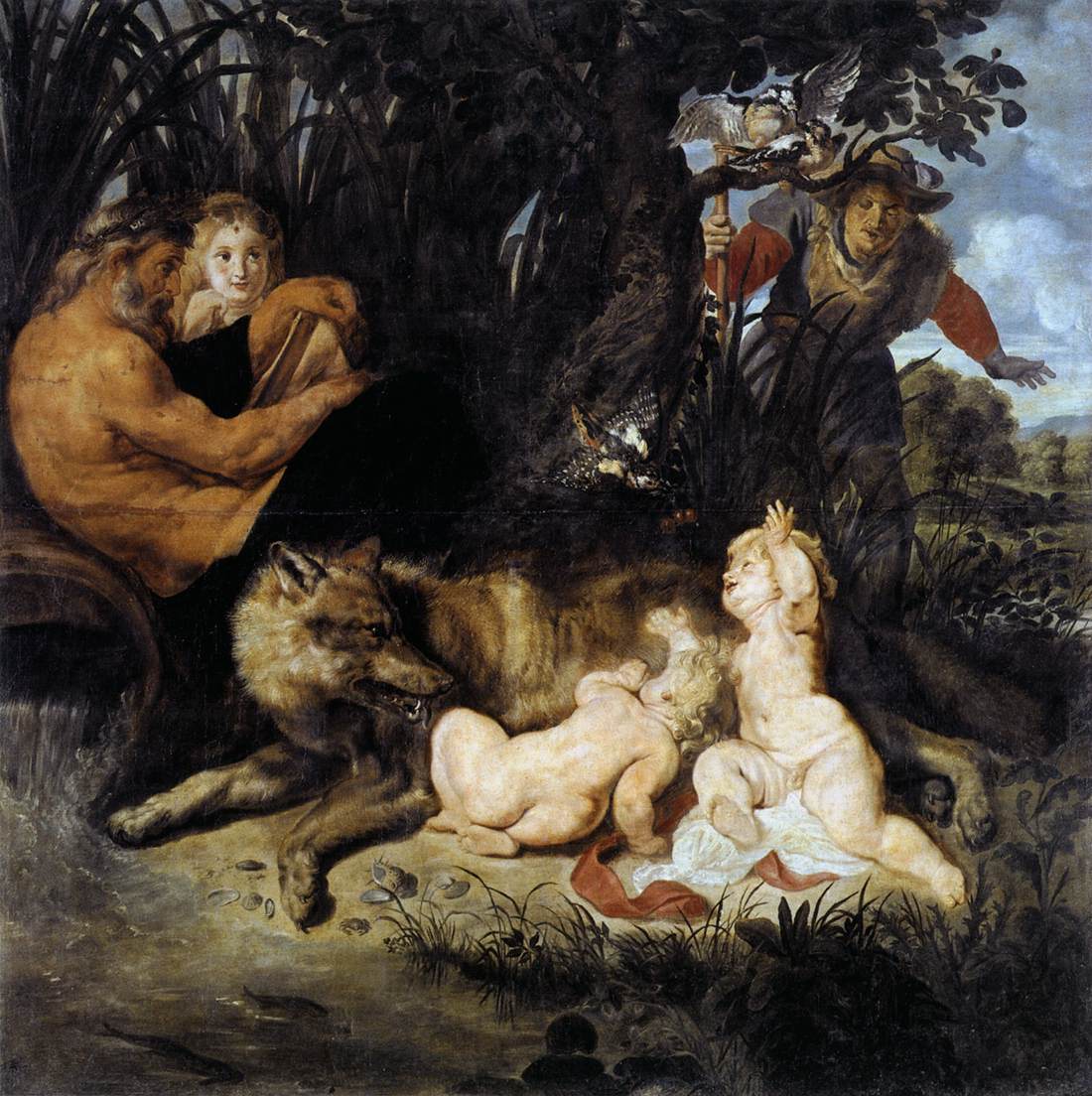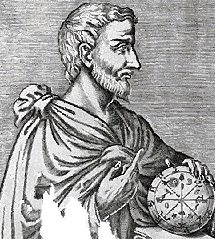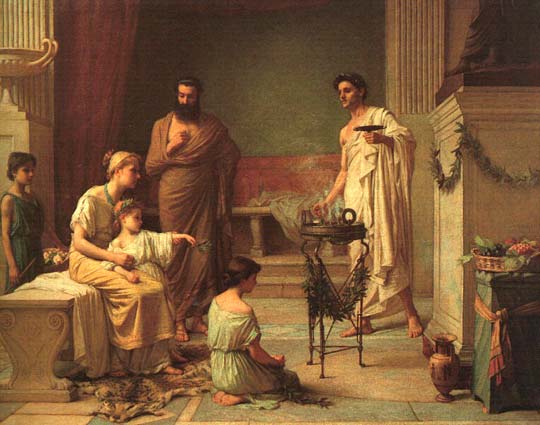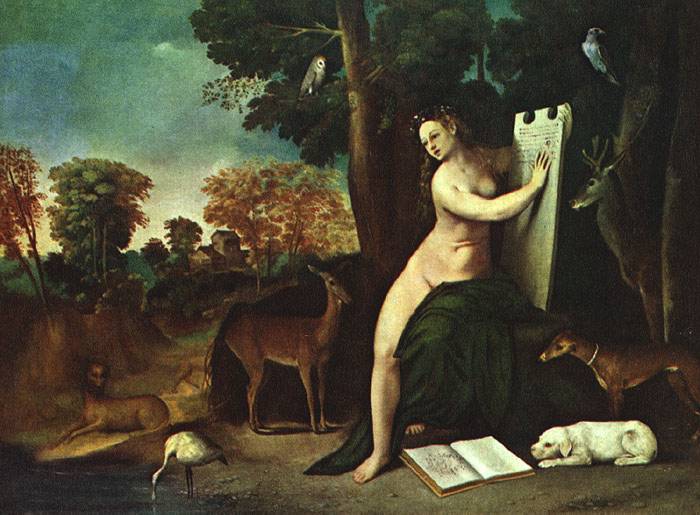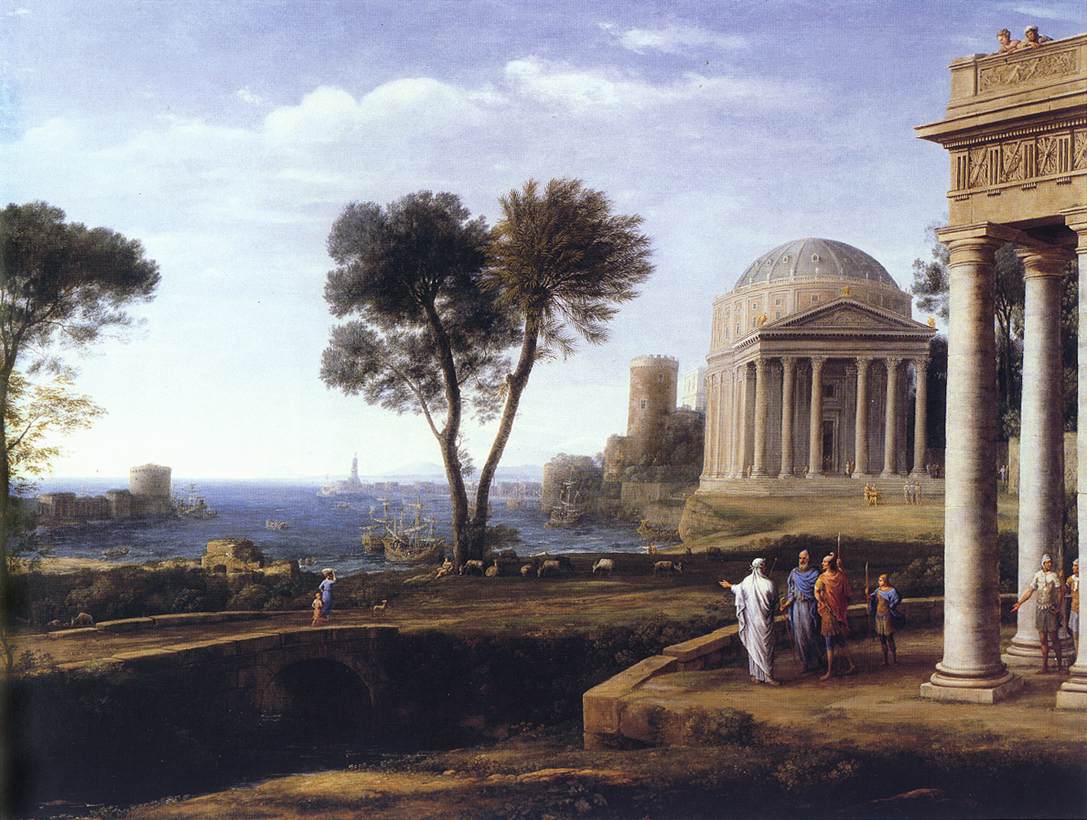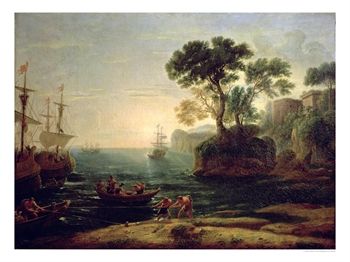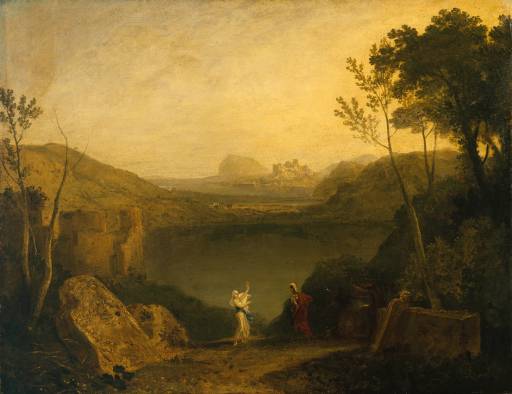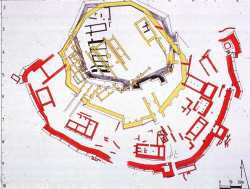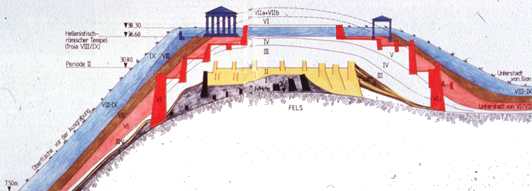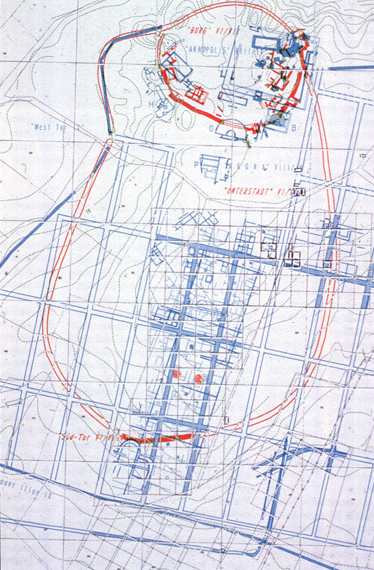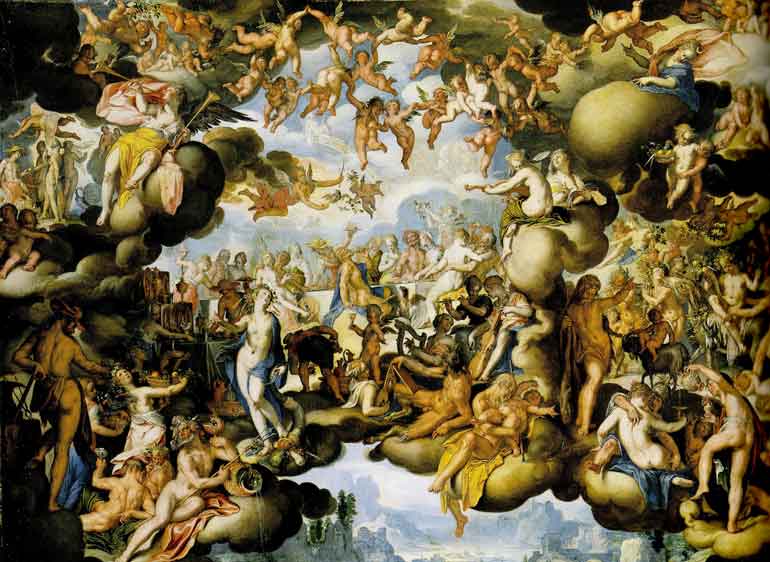"We can keep from a child all knowledge of earlier myths, but we cannot take from him the need for mythology." -Jung
And here we are at the end of the class and semester. And after the rebirth of the year, we will begin another. It seems appropriate, seeing as of today I have completed another year of this voyage termed life. Another birthday where a chapter closes and a new one begins. It also seems apt that it comes in the "dead" of winter.
This ritual "death" of a class is less than a month away from the spring renewal. The cycle begins again, just as any other cycle. Except now, we are equipped with a knowledge of our origins and myths.
As I wrote and digested Henderson, I really came away thinking how closely intertwined the beginnings and the ends really are. Death is not a reason for mourning but rather a step in the cycle. How a body is in life, affected by the elements, the natural, the tasks it undergoes, the house it lives in; so it is the same in death. As I work in my nursing home, we have one of the most fatal months that I remember, losing five of my friends to old age.
Within me lives the memory of those who passed. Their myth, intertwined with my own. Their origins becoming a part of mine.
And the cycle renews. I am greeted with the news just a week and a half ago of a birth in the family. Even my daughter finds power in these origins. She constantly wants to "visit the old people" and sits on my lap content to listen to the stories of Ovid and others for hours, even though her 3 year old mind struggles to comprehend them. "Why does it turn to gold?" "Echo, echo, echo!" she says. The recapitulation comes full circle as Henderson's did when he took the lion cub and befriended the infant on the plane. Could this possibly be "for the first time"?
Thursday, December 9, 2010
Final Thoughts
I felt like I could have written more blogs, but spent a great deal of time inundated with the rich artwork of the Renaissance and other periods. One of my favorites turns out to be John William Waterhouse, who is more contemporary (1849-1917) but truly captures some of the Renaissance style. I felt like the pictures were extremely powerful and attempted to convey the third dimension which is not captured alone in the writings. I noticed, sadly, how there was a sharp decline in mythological artwork at the beginning of the 20th century. I guess this is partly a byproduct of the splintering of media sources but there certainly is a decline of actual paintings and sketches of mythological works. There are certainly a few exceptions: Picasso, Dali, Beckmann, Matisse, and Warhol (though very few Ovid ones occurred from any one of these artists). Perhaps I am more of a sucker for the old stuff, I guess.
Another interesting thing I came across while searching for different pictures which related to each story was that often times the scientific names of different families or orders of birds and plants were directly named from there Ovid counterpart. This is a nice renewal of the myths in the modern world.
Another interesting thing I came across while searching for different pictures which related to each story was that often times the scientific names of different families or orders of birds and plants were directly named from there Ovid counterpart. This is a nice renewal of the myths in the modern world.
Images of Metamorphoses XV
Metamorphoses XV
"Would you, dear daughter, alone, change fate, which never can be altered? All you need do is visit the three Sisters; in their own home you'll find the massive archive of all the world: those tablets, made of brass and tough iron, have no fear of lightning's wrath or heaven's tremors; and they can withstand - secure, eternal - any other shock. There you will find the fate of your descendants engraved on metal - indestructible." -Jove
This excerpt from the last chapter I liked because it tied in nicely with the theme of my paper, and somewhat into what I feel really applied from the readings. Jove is instructing his daughter to learn from her descendants. He says the origins are written in metal to be preserved and remembered. They are secure and indestructible. In the power of these origins might we learn and find our own power. Although fate cannot be altered, we can look to the past for guidance in the future.
The really interesting question ingrained in this excerpt is, is destiny changeable? It appears even the gods are subject to the decrees of the Fates, but is this separate from the fate Ovid is writing about here? Fate as a thing of the past controlled by the Sisters, but fate, the future as Ovid discusses it here?
This excerpt from the last chapter I liked because it tied in nicely with the theme of my paper, and somewhat into what I feel really applied from the readings. Jove is instructing his daughter to learn from her descendants. He says the origins are written in metal to be preserved and remembered. They are secure and indestructible. In the power of these origins might we learn and find our own power. Although fate cannot be altered, we can look to the past for guidance in the future.
The really interesting question ingrained in this excerpt is, is destiny changeable? It appears even the gods are subject to the decrees of the Fates, but is this separate from the fate Ovid is writing about here? Fate as a thing of the past controlled by the Sisters, but fate, the future as Ovid discusses it here?
Metamorphoses XIV
"And Circe, before we left, warned us how treacherous our paths might be, how vast the ocean was, what dangers wait along the savage sea. Her words - I must confess - filled me with fright; and when we reached this beach, I stayed behind." -Macareus
In essence, he was scared off.
His blabber did not stop until the tree-bark cloaking him climbed up around his neck: he's now a tree, in fact.
Another example of tree metamorphosis.
But then Cybele called to mind that all this timber came from her own pines; and so the Mother of the gods, with brazen cymbals, clanging loud and harsh, and with her brash and blatant boxwood flutes, filled all the sky; drawn through the light air by her team of harnessed lions, she outcried: "O Turnus, with your sacrilegious hands you fling - in vain - those torches! I shall save these ships; I'll not permit the greedy flames to burn these pines - these parts, these very limbs - of my own forests."
In essence, he was scared off.
His blabber did not stop until the tree-bark cloaking him climbed up around his neck: he's now a tree, in fact.
Another example of tree metamorphosis.
But then Cybele called to mind that all this timber came from her own pines; and so the Mother of the gods, with brazen cymbals, clanging loud and harsh, and with her brash and blatant boxwood flutes, filled all the sky; drawn through the light air by her team of harnessed lions, she outcried: "O Turnus, with your sacrilegious hands you fling - in vain - those torches! I shall save these ships; I'll not permit the greedy flames to burn these pines - these parts, these very limbs - of my own forests."
Images of Metamorphoses XIV
Wednesday, December 8, 2010
Images of Metamorphoses XIII
Metamorphoses XIII
"If you still want this contest, Ulysses, let's go back to that same spot: we'll put the enemy in place again, your wound, and your accustomed cowardice; then you can huddle underneath my shield, a place most safe - and there we can compete!" -Ajax
"He, too, runs off. I saw you, Ajax, when you turned your back; I saw you - and I was ashamed. You rush to spread your faithless sails, as I cry out: 'What are you doing? Have your minds gone wild, to fall? If you sail off at this late date, what do you carry home, except disgrace?'" -Ulysses
I like the two speeches, they remind me of politicians or lawyers. And, like a good deal of trials or elections, the most eloquent man wins here.
This story of Polyxena & Hecuba struck me. Here, Hecuba finds that not only her last living daughter is taken by the Achilles and the Greeks, but her son Polydorus washes ashore as she moves to gather water to wash Polyxena's fatal wound. One line made a very distinct impression on me.
"'My child, your mother's final grief - what else is left for me to mourn? My child, you die: I see you die: I see your wound, my wound - another sign that none among my children ever met a death that was not cruel, violent...Even his buried ashes - from the grave - do not abate his savagery: he hates our race. My womb has served to bring him fruit.'"
This is the womb to grave cycle. All of the children Hecuba bore have died to the war. Not only died, but made someone else great in the process.
"He, too, runs off. I saw you, Ajax, when you turned your back; I saw you - and I was ashamed. You rush to spread your faithless sails, as I cry out: 'What are you doing? Have your minds gone wild, to fall? If you sail off at this late date, what do you carry home, except disgrace?'" -Ulysses
I like the two speeches, they remind me of politicians or lawyers. And, like a good deal of trials or elections, the most eloquent man wins here.
This story of Polyxena & Hecuba struck me. Here, Hecuba finds that not only her last living daughter is taken by the Achilles and the Greeks, but her son Polydorus washes ashore as she moves to gather water to wash Polyxena's fatal wound. One line made a very distinct impression on me.
"'My child, your mother's final grief - what else is left for me to mourn? My child, you die: I see you die: I see your wound, my wound - another sign that none among my children ever met a death that was not cruel, violent...Even his buried ashes - from the grave - do not abate his savagery: he hates our race. My womb has served to bring him fruit.'"
This is the womb to grave cycle. All of the children Hecuba bore have died to the war. Not only died, but made someone else great in the process.
Recapitulation and Henderson
The recapitulation of mankind is discussed in Myth and Reality and manifests itself in the pages of Saul Bellow’s Henderson the Rain King. Eugene epitomizes the human condition, following his one driving, incessant, nagging inner desire: “I want, I want.” By gleaning knowledge of primal rituals, Henderson begins to understand his role in the recapitulation and appeases his inner desire. “For the man of the archaic societies, that is, knowledge of the origin of each thing (animal, plant, cosmic object, etc.) confers a kind of magical mastery over it; he knows where to find it and how to make it reappear in the future.” (Eliade p.76) Henderson’s metamorphosis to Sungo, the Rain King, brings him “knowledge of the origin” of rain and his role in its’ propagation. As Henderson traverses through Africa, each new realization brings him closer to understanding his part in the summary of mankind.
Henderson parts ways with Charlie almost immediately upon reaching Africa, realizing that taking pictures and seeing Africa was not enough to fulfill his primal longing. The voice drives him away from the sightseeing to the less traveled routes and finally to the Arnewi village. The Arnewi make a profound impression on Henderson from the initial encounter. “And now I began to observe that the coloring of these people was very original...” (Bellows p.51) Even from this first moment, he can sense that the phylogeny of the Arnewi people is represented outwardly. They are embracing and incorporating ancient ritual into their daily lives. Henderson also notes, “Just then I deeply felt my physical discrepancies.” (Bellows p.51) indicating that he is not yet been embraced by the Arnewi ontogeny. His outward manifestation of ancestry and origin lacks substance or basis at this point in his voyage because he does not understand the vital link to it. Eliade states, “The time that has passed between the origin and the present moment is neither ‘strong’ nor ‘significant’…” (Eliade p.34) indicating that Henderson is perhaps closer than he realizes to recognizing his own recapitulation.
Henderson wants to become a part of this rich life cycle and fulfill his yearning to understand “the greater or deeper facts of life.” Henderson undergoes a series of ephiphenies while residing with the Arnewi. By participating in the ritual of wrestling with Itelo, Henderson gains their acceptance and earns the tribes sacred praise and trust. Itelo proclaims an intimacy with Henderson after the wrestling match saying, “I know you now, sir” (Bellows p.70). Henderson has joined Itelo and the Arnewi in their recapitulation of origins. The Arnewi’s myth has become thoroughly interwoven with Henderson’s myth.
A second profound experience occurs when Henderson meets queen Willatale. After giving her a raincoat as a gift, she pulls him to her and envelopes his head with her supple stomach. This display of affectionate affirmation is particularly important because he is being pulled to the omphalos of the queen and the tribe. Again Henderson is touched by the ritual and origin of the Arnewi people. Henderson notes that this embrace is a “…significant experience (having made contact with a certain power--unmistakable!--which emanated from the woman’s middle)…” (Bellows p.74) This womb holds the key to perpetuation or demise of the entire tribe. It signifies the beginnings of the Arnewi people. It is the central strength of the clan. Henderson is struck by this simple yet essential truth: the phylogeny of the Arnewi is represented by queen Willatale’s midriff.
At this point in the novel, Henderson is in the larval stage of his metamorphosis. He has encountered the rightness in the origins with the Arnewi and will encounter the power of endings with King Dahfu’s passing. From the initial encounter with the Wariri, Henderson has been faced with the circle of life from birth to death. When he and Romilayu find the dead man in their quarters, Henderson makes an interesting observation: “But he was scowling and had a wrinkle on his forehead somewhat like a high-water mark or a tidal line to show that life had reached the last flood and then receded…” (Bellows p.135-6) This illustrates the plurality of water and also foreshadows Henderson’s role as Sungo. The ritual use of skulls by the Wariri also signifies ends.
One of the most significant moments in the book is the ceremony where Henderson and the other Wariri lift and move statues of the gods. Here, Henderson becomes involved in the recapitulation of the Wariri by lifting Mummah. His myth is once again intermingled with that of the native African tribe’s. He yearns to partake of the ritual lifting of the gods, and, after being allowed to partake, uses his strength to master the largest of statues. Henderson admits he is not surprised when the clouds fill the sky after lifting Mummah. He has found the origin of the rain and propagated its’ forthcoming. Swept up in the ritual of Sungo and the Wariri rain production ceremony, Henderson leaves his hesitations and limitations behind. Within this process, he finds out who he really is, his reason for existence. “With swollen throats the amazons cried and howled, and I, lumbering with them, tried to remember who I was. Me…The king of the rain.” (Bellows p.199)
While the Wariri tribe marches along singing, dancing, and ritualistically calling forth the rain, the skulls of Wariri ancestors are held high on banners. This symbolizes the nearness of life and death both of which are exemplified in the properties of water. Henderson marches with them as Sungo, a symbolic re-creator of the rainfall. “The gestation of a chief is the occasion for a symbolic ‘re-creation’ of the World. The recapitulation is at once a reminder and a ritual reactualization, through song and dance, of the essential mythical events that have taken place since the Creation” (Eliade p.23). Henderson’s metamorphosis to Sungo and the ceremony of the rain dance allows for ritual rebirth/destruction, which is possible as a result of the water coming. Henderson notes the duality of the inundation, “‘Rain? What rain? It’s the deluge. It feels like the end…’” (Bellows p.202) alluding to the “essential mythical event” of the global flood. The landscape, peoples, and animals thrive with this infusion of the rainwater, which signifies both mythical beginnings and ends.
In the end, the cyclic life is fulfilled when the lion kills Dahfu. Henderson ponders the role death plays. “Evidently I happen to have a great death potential.” (Bellows p.252) This is because, as Sungo the rain king, Henderson is a liaison between life given and life taken. On the plane ride home, Eugene encounters an orphaned baby on its way to Nevada and befriends the infant. This completes the recapitulation: the lion cub Dahfu, the infant on the plane, and the metamorphosis of Henderson. “Two smoothly gray eyes moved at me, greatly expanded into the whites--new to life altogether. They had that new luster. With it they had ancient power, too. You could never convince me that this was for the first time.” (Bellows p.339)
Henderson parts ways with Charlie almost immediately upon reaching Africa, realizing that taking pictures and seeing Africa was not enough to fulfill his primal longing. The voice drives him away from the sightseeing to the less traveled routes and finally to the Arnewi village. The Arnewi make a profound impression on Henderson from the initial encounter. “And now I began to observe that the coloring of these people was very original...” (Bellows p.51) Even from this first moment, he can sense that the phylogeny of the Arnewi people is represented outwardly. They are embracing and incorporating ancient ritual into their daily lives. Henderson also notes, “Just then I deeply felt my physical discrepancies.” (Bellows p.51) indicating that he is not yet been embraced by the Arnewi ontogeny. His outward manifestation of ancestry and origin lacks substance or basis at this point in his voyage because he does not understand the vital link to it. Eliade states, “The time that has passed between the origin and the present moment is neither ‘strong’ nor ‘significant’…” (Eliade p.34) indicating that Henderson is perhaps closer than he realizes to recognizing his own recapitulation.
Henderson wants to become a part of this rich life cycle and fulfill his yearning to understand “the greater or deeper facts of life.” Henderson undergoes a series of ephiphenies while residing with the Arnewi. By participating in the ritual of wrestling with Itelo, Henderson gains their acceptance and earns the tribes sacred praise and trust. Itelo proclaims an intimacy with Henderson after the wrestling match saying, “I know you now, sir” (Bellows p.70). Henderson has joined Itelo and the Arnewi in their recapitulation of origins. The Arnewi’s myth has become thoroughly interwoven with Henderson’s myth.
A second profound experience occurs when Henderson meets queen Willatale. After giving her a raincoat as a gift, she pulls him to her and envelopes his head with her supple stomach. This display of affectionate affirmation is particularly important because he is being pulled to the omphalos of the queen and the tribe. Again Henderson is touched by the ritual and origin of the Arnewi people. Henderson notes that this embrace is a “…significant experience (having made contact with a certain power--unmistakable!--which emanated from the woman’s middle)…” (Bellows p.74) This womb holds the key to perpetuation or demise of the entire tribe. It signifies the beginnings of the Arnewi people. It is the central strength of the clan. Henderson is struck by this simple yet essential truth: the phylogeny of the Arnewi is represented by queen Willatale’s midriff.
At this point in the novel, Henderson is in the larval stage of his metamorphosis. He has encountered the rightness in the origins with the Arnewi and will encounter the power of endings with King Dahfu’s passing. From the initial encounter with the Wariri, Henderson has been faced with the circle of life from birth to death. When he and Romilayu find the dead man in their quarters, Henderson makes an interesting observation: “But he was scowling and had a wrinkle on his forehead somewhat like a high-water mark or a tidal line to show that life had reached the last flood and then receded…” (Bellows p.135-6) This illustrates the plurality of water and also foreshadows Henderson’s role as Sungo. The ritual use of skulls by the Wariri also signifies ends.
One of the most significant moments in the book is the ceremony where Henderson and the other Wariri lift and move statues of the gods. Here, Henderson becomes involved in the recapitulation of the Wariri by lifting Mummah. His myth is once again intermingled with that of the native African tribe’s. He yearns to partake of the ritual lifting of the gods, and, after being allowed to partake, uses his strength to master the largest of statues. Henderson admits he is not surprised when the clouds fill the sky after lifting Mummah. He has found the origin of the rain and propagated its’ forthcoming. Swept up in the ritual of Sungo and the Wariri rain production ceremony, Henderson leaves his hesitations and limitations behind. Within this process, he finds out who he really is, his reason for existence. “With swollen throats the amazons cried and howled, and I, lumbering with them, tried to remember who I was. Me…The king of the rain.” (Bellows p.199)
While the Wariri tribe marches along singing, dancing, and ritualistically calling forth the rain, the skulls of Wariri ancestors are held high on banners. This symbolizes the nearness of life and death both of which are exemplified in the properties of water. Henderson marches with them as Sungo, a symbolic re-creator of the rainfall. “The gestation of a chief is the occasion for a symbolic ‘re-creation’ of the World. The recapitulation is at once a reminder and a ritual reactualization, through song and dance, of the essential mythical events that have taken place since the Creation” (Eliade p.23). Henderson’s metamorphosis to Sungo and the ceremony of the rain dance allows for ritual rebirth/destruction, which is possible as a result of the water coming. Henderson notes the duality of the inundation, “‘Rain? What rain? It’s the deluge. It feels like the end…’” (Bellows p.202) alluding to the “essential mythical event” of the global flood. The landscape, peoples, and animals thrive with this infusion of the rainwater, which signifies both mythical beginnings and ends.
In the end, the cyclic life is fulfilled when the lion kills Dahfu. Henderson ponders the role death plays. “Evidently I happen to have a great death potential.” (Bellows p.252) This is because, as Sungo the rain king, Henderson is a liaison between life given and life taken. On the plane ride home, Eugene encounters an orphaned baby on its way to Nevada and befriends the infant. This completes the recapitulation: the lion cub Dahfu, the infant on the plane, and the metamorphosis of Henderson. “Two smoothly gray eyes moved at me, greatly expanded into the whites--new to life altogether. They had that new luster. With it they had ancient power, too. You could never convince me that this was for the first time.” (Bellows p.339)
Images of Metamorphoses XII
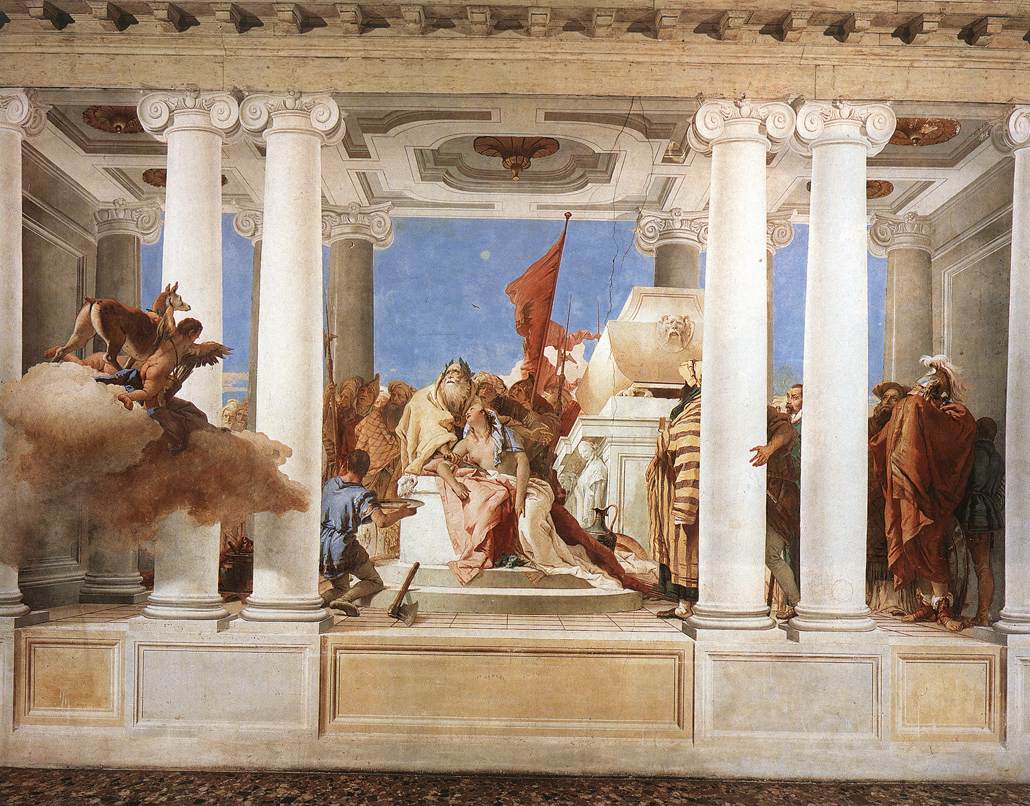 | ||
| Sacrifice of Iphigenia, Studio of Giovanni Battista Tiepolo, 1757 |
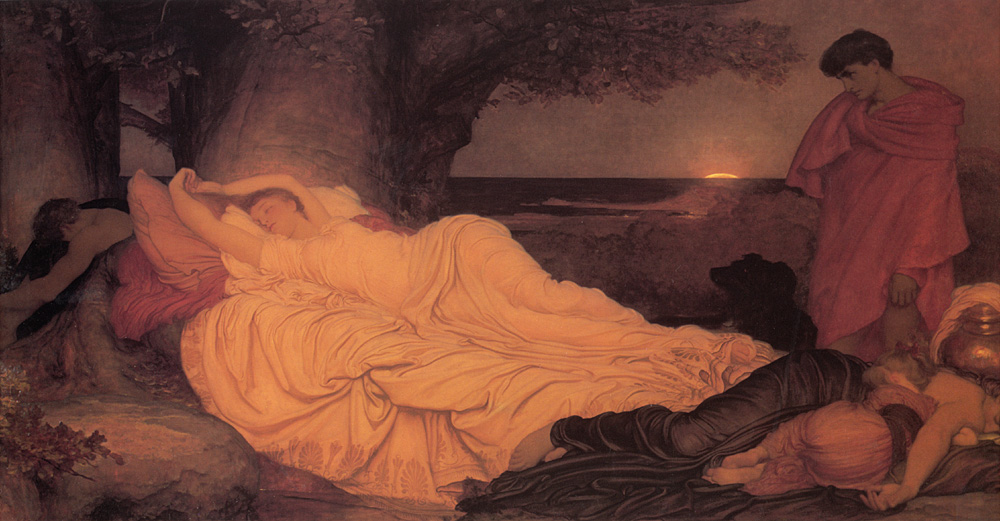 | |
| Cymon and Iphigenia, Lord Frederick Leighton, 1884 |
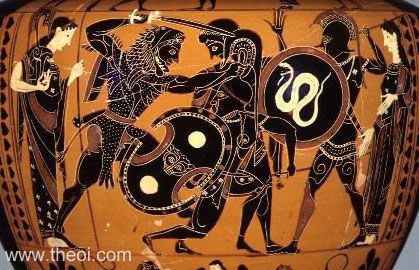 | |
| Heracles & Cycnus, c. 510-500 BC |
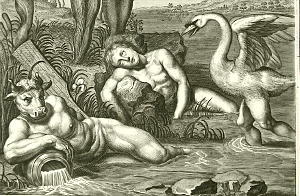 | |
| Cycnus, B. Picart, 1733 |
 | |
| Battle of the Lapiths and Centaurs, Sebastiano Ricci, 1705 |
 | |
| 16th century French helmet depicting the battle of Lapiths and Centaurs on it |
 |
| The Death of Achilles, Peter Paul Rubens, 1630-1635 |
Metamorphoses XII
Only Paris was missing from the mournful rites; he'd gone to Greece. A little later, he returned indeed: he brought a stolen wife together with a war that lasted long. A thousand ships pursued him: at his back, the many clans of Greece, the ranks of all Pelasgians had massed.
The face that launched a thousand ships.
"The Lapith's dome was shattered; through his mouth and eyes and ears and hollow nostrils oozed his soft brains, just as curdled milk strains through those withes of oak that countrymen will use when making cheese - or just as soggy must will drip when pressed down, think, through a clogged sieve." -Nestor
I think the Romans loved gore as much as Americans do now.
The face that launched a thousand ships.
"The Lapith's dome was shattered; through his mouth and eyes and ears and hollow nostrils oozed his soft brains, just as curdled milk strains through those withes of oak that countrymen will use when making cheese - or just as soggy must will drip when pressed down, think, through a clogged sieve." -Nestor
I think the Romans loved gore as much as Americans do now.
Images of Metamorphoses XI
Metamorphoses XI
The Shade of Orpheus descends beneath the earth. The poet knows each place that he had visited before; and searching through the fields of pious souls, he finds Eurydice. And there they walk together now: at times they are side by side; at times she walks ahead with him behind; at other times it's Orpheus who leads - but without any need to fear should he turn round to see his own Eurydice.
King Sleep was father of a thousand sons - indeed a tribe - and of them all, the one he chose was Morpheus, who had such skill in miming any human form at will...it's another Dream who can become a quadruped, a bird, or a long snake; that Dream the gods call Icelos - but when he's named by common mortals, he's Phobetor. And still another Dream can claim quite special gifts: his name is Phantasos; the forms that he assumes deceive, intrigue: the shapes of earth and rocks, and water, trees- in sum, of lifeless things. And there are Dreams who show themselves by night to kings and chiefs, while others roam among the common folk.
Orpheus is finally reunited with his wife and lover. Though not by the prettiest means. Those damn Bacchantes are always tearing people apart.
I really liked this description of Dreams, the personification. One of my favorite passages in the book.
King Sleep was father of a thousand sons - indeed a tribe - and of them all, the one he chose was Morpheus, who had such skill in miming any human form at will...it's another Dream who can become a quadruped, a bird, or a long snake; that Dream the gods call Icelos - but when he's named by common mortals, he's Phobetor. And still another Dream can claim quite special gifts: his name is Phantasos; the forms that he assumes deceive, intrigue: the shapes of earth and rocks, and water, trees- in sum, of lifeless things. And there are Dreams who show themselves by night to kings and chiefs, while others roam among the common folk.
Orpheus is finally reunited with his wife and lover. Though not by the prettiest means. Those damn Bacchantes are always tearing people apart.
I really liked this description of Dreams, the personification. One of my favorite passages in the book.
Subscribe to:
Posts (Atom)



